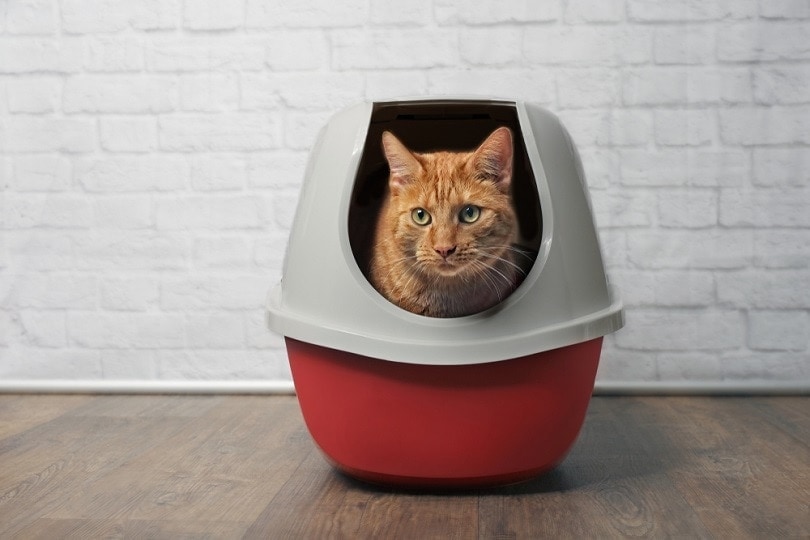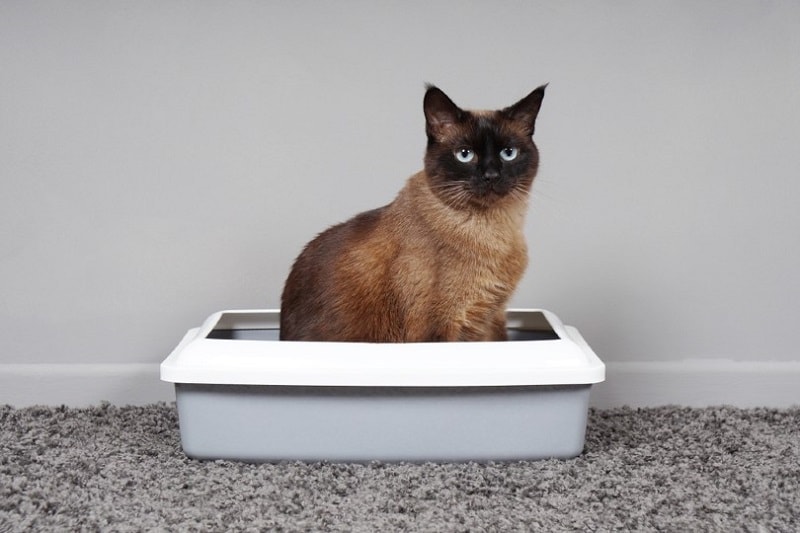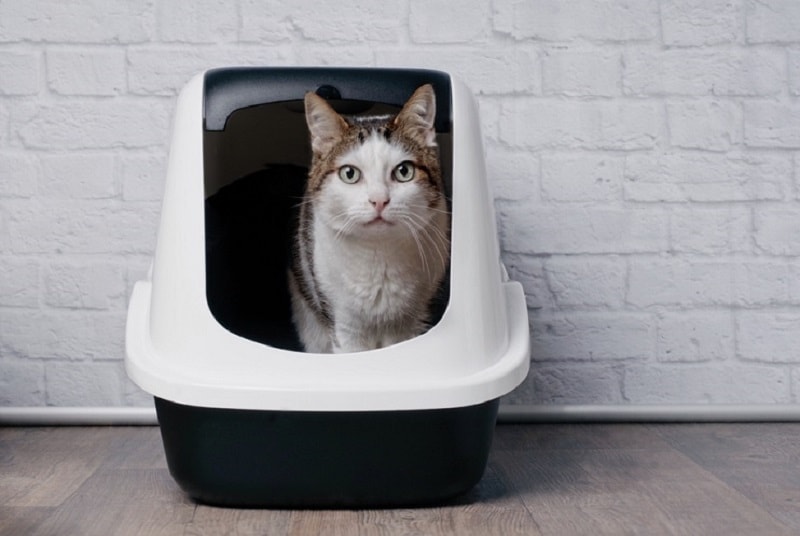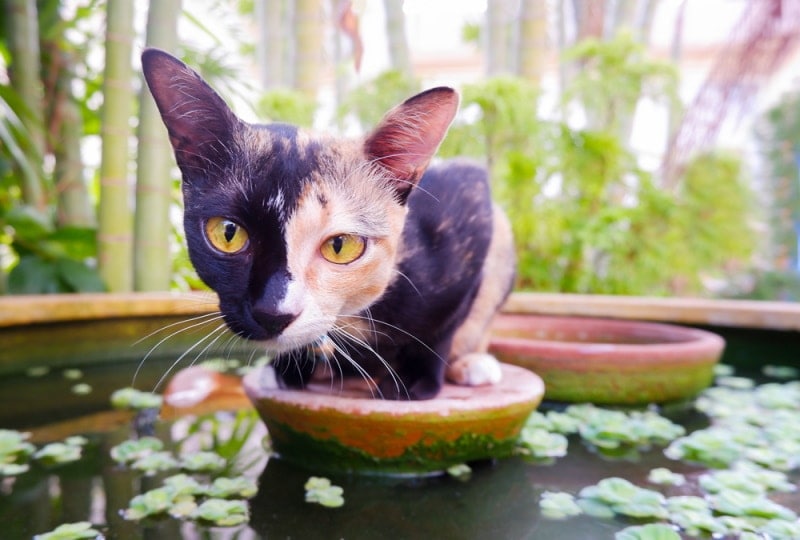Best (and Worst) Spots to Put a Cat Litter Box – Our Complete Guide

Updated on

Cats can be notoriously fussy at the best of times, and the same goes with their litter box. Things as seemingly insignificant as a strange smell can potentially stop them from using their litter box, so as you can imagine, the placement of their litter box is vital too.
Having a litter box is probably the only major downside to owning a cat, but it is something that all cat owners need to deal with. If you have just brought home a new feline friend or moved into a new home, you may be wondering where the best location is to put their litter box. It may seem like a small thing, but it can have major consequences in litter box training your cat and in their happiness overall. Once your cat develops a bad habit, it can be a challenge to reverse.
In this article, we take a look at the best (and worst spots) to put your cat’s litter box. Let’s get started!
Places to avoid putting a litter box
Let’s begin with the places where you should not put your cat’s litter box. It’s important to note that like humans, cats prefer to do their business in quiet, low-traffic areas, so their litter box needs to be in a spot in your home that is not too busy.
- Avoid closed-in, dark places like a closet or cupboard. Your cat will not feel comfortable in the dark, and the lack of ventilation and sunlight is unhygienic. Plus, even with your cat’s superior eyesight, they can make a mess!
- Avoid busy, high-traffic areas where your cat won’t get any privacy. Places like the kitchen or foyer are often used for litter boxes, but your cat is unlikely to feel comfortable in these busy areas, and in any case, it is unhygienic to have their litter box so close to food preparation areas.
- The same goes for placing their box near a noisy appliance, like a washing machine. The frenetic noise may scare them off the litter box and create a fearful attachment to their box that can be difficult to reverse.
- Try to avoid making them climb stairs. If they spend most of their time downstairs, place it somewhere at the bottom or put a litter box both upstairs and downstairs.
- Never put their litter box close to where they eat. They may not have an issue with it, but it is highly unhygienic.

Best places for a cat litter box
Now that you know the places to avoid putting their box, we can look at the best places to put it. Before we start, we highly recommend having more than one litter box for your cat, away from each other. Some cats prefer to urinate and defecate in separate boxes, and having another option is also helpful in making sure that they use the litter box, as they always have two options.
Also, if you have more than one cat, you’ll want one or two extra boxes, as some cats refuse to share!
Here are a few of the best places for your cat’s litter box:
- The best place is somewhere private, like a guest bedroom or bathroom. A bathroom is arguably the best area because it’s quiet and has plenty of airflow.
- If you are lacking in bathroom space, a sectioned-off area is another great option. A living room has plenty of open space, light, and airflow, and the litter box can even be disguised as furniture or house plants.
- A laundry room is great because it’s quiet, low-traffic, and easy to clean. Just make sure to place the litter box away from any noisy machinery.
- The bedroom is another suitable option. Most likely, your cat already feels comfortable in your bedroom because it’s spacious and has plenty of light. If the smell is an issue, you can purchase a self-cleaning litter box or a hidden litter box that doubles as furniture or uses a screen door for privacy.

General litter box tips
Here are a few tips to help encourage good litter box habits in your cat once you have found a suitable location:
- If your litter box is in a separate room or bathroom, a cat door is a great investment. It will stop kids and large dogs from accessing the litter box and give your cat unlimited access to their box. Also, it prevents your cat from accidentally getting trapped in a room.
- Avoid relocation. Moving your cat’s litter box to another location can be stressful for them and undo all your hard work in training. If you must move it, you will need to do it gradually and slowly to avoid stressing out your cat.
- Keep their litter box clean! All cat owners know how fastidious cats are about cleanliness, and they’ll avoid using dirty litterboxes and choose the floor instead.
Sometimes even the best litter box setup needs a helping hand in combating invasive smells. Our Hepper Advanced Bio-Enzyme Cat Litter Deodorizer naturally breaks down odors at the source. This effective litter additive can help all types of cat litter last longer, saving you money, and is safe for all life stages. Best of all, it's 100% biodegradable and fragrance-free.
- Bio Enzymatic Cat Litter Freshener - Smart formulation uses natural ingredients eliminating cat...
- Save Money - Stuff for cats isn’t the cheapest. With this litter box odor eliminator, you’ll...
Final thoughts
Choosing the right place for your cat’s litter box can make or break their potty training, and it’s an important consideration. Try to avoid areas that have too much traffic and noise and are near their feeding or your eating area.
As long as the location is quiet, has plenty of light, and is roomy, you should be good to go!
Check out some of our other top trending posts:
Featured Image Credit: Lightspruch, Shutterstock











